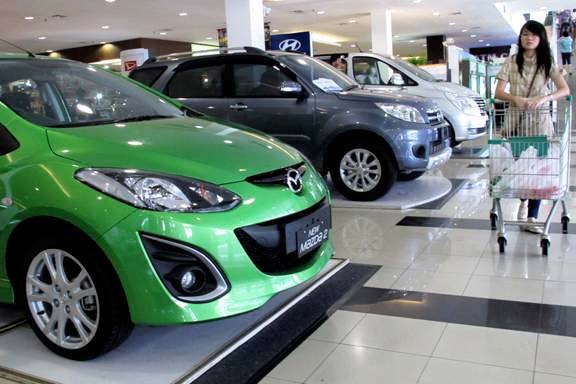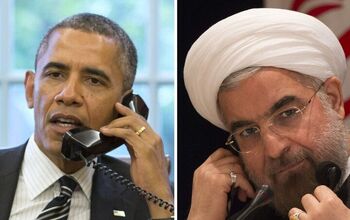Beyond The BRICs
Emerging markets have been a big theme at TTAC for the past few years, with our coverage going beyond the cursory articles on automotive developments in the BRIC countries. Our articles on places like North Africa and Indonesia aren’t always the most popular, but we keep an eye on them for a very important reason. These countries are the final frontier for growth in the automotive sector.
Boston Consulting Group released a report that urges auto makers to look beyond the BRICs, to a group of 88 countries that contain roughly 40 percent of the world’s population. Collectively, annual growth of 6 percent is expected, below India’s 10 percent, but on par with China and outpacing both Brazil and Russia.
Rather than cover all 88 nations, BCG identified the “Future 15” countries where car sales are expected to show strong increases in sales (Iran, Turkey, Saudi Arabia, the Ukraine, Indonesia, South Korea, Thailand, Malaysia, Taiwan, Mexico, Argentina, Colombia, Chile, South Africa and Algeria), as well as four regional areas that will serve not only as sales hot spots, but also as future locations for assembly plants, R&D and sourcing. Not surprisingly, these are based in North Africa, the ASEAN region, the Middle East and the Andean region in South America.
The need for specific regional strategies is a key theme in the report, with BCG devoting plenty of space to the need for product, financing and sourcing solutions that are best adapted to regional characteristics. Among their examples are the importance of offering a vehicle with a low tax burden in the Middle East, a tailor-made financing plan for Latin American consumers from Chevrolet and Renault’s North African assembly efforts for its Dacia brand.
One of the more interesting examples highlighted by the report was that of the ASEAN countries. Toyota is overwhelmingly dominant in Indonesia, its biggest market, and one possible reason is because of its ability to build products at an appropriate price-point that strongly resonate with local buyers. A side by side comparison between the Japanese market Sienta MPV and the Indonesian Avanza shows how this is done.
On the surface, the two seem indistinguishable, but under the skin, they are vastly different cars. The Sienta rides on a platform shared with the Yaris, while the Avanza uses a rugged, body-on-frame rear-drive layout with increased ground clearance, to handle Indonesia’s rougher roads and frequent flooding. Its powertrain and interior are much less advanced, and the Avanza has fewer creature comforts. But it’s built to a price, costing as much as $5,000 less than a Sienta, a fact that’s reflected in the slab-sided body panels, which are easier and cheaper to stamp. This kind of specialization is what’s allowed Toyota to capture 90 percent of Indonesia’s market, giving them an enormous head start in what is expected to be the next big place to sell cars.
ASEAN is not the only region where Toyota enjoys the top spot. The auto maker is leading slightly in volume in the Middle East, though second-place Kia is essentially equal in terms of market share. Chevrolet is regarded as the leader in the Andean belt, while Renault and Dacia are tops in North Africa. While Korean OEMs also have a strong showing, both Renault and Peugeot are strong in the Middle East and Africa, even as their efforts falter in Europe.
The common thread with all of this is an emerging middle class in regions where that notion did not exist. With prosperity on the rise, they are eager to attain greater mobility and freedom though an automobile of their own. Along with personal transportation comes the possibility of good jobs in assembly plants, sales and after-sales, logistics and other related industries. Renault and Dacia have begun to look to North Africa as a regional hub not only for the African market, but for the Middle East and even Europe. Nissan’s Datsun brand is one of the first to explicit target the “Beyond BRIC” countries, with stated aims to expand into Indonesia and Africa in the near future.
More by Derek Kreindler
Latest Car Reviews
Read moreLatest Product Reviews
Read moreRecent Comments
- FreedMike Your Ford AI instructor:
- Jeff Good find I cannot remember when I last saw one of these but in the 70s they were all over the place.
- CoastieLenn Could be a smart move though. Once the standard (that Tesla owns and designed) is set, Tesla bows out of the market while still owning the rights to the design. Other companies come in and purchase rights to use it, and Tesla can sit back and profit off the design without having to lay out capital to continue to build the network.
- FreedMike "...it may also be true that they worry that the platform is influencing an entire generation with quick hits of liberal political thought and economic theory."Uh...have you been on TikTok lately? Plenty of FJB/MAGA stuff going on there.
- AZFelix As a child I loved the look and feel of the 'woven' black vinyl seat inserts.


































Comments
Join the conversation
Iran has a solid manufacturing and R&D base in place already. They were producing nearly 1M cars last time I checked (long time ago).
There are those who would have you spell BRICs as BRICS - mostly the South African government. However, all is not well for the car manufacturing industry in the lower-case 's' in BRICs. BMW has stopped "all future plans" to expand in South Africa after a four-week strike caused a huge drop in production and profits. http://www.bbc.co.uk/news/business-24367675